Policy: Bobby calves and restricted veterinary medicines, including dry cow therapy
Policy type: Policy
Reference: 5j
Status: Current
Date ratified: June 2017
Introduction
Residues in bobby calf products threaten trade, especially to the USA. Veterinarians should take every reasonable action to ensure that no residues attributable to restricted veterinary medicines (RVMs) are present in bobby calves at slaughter and should retain evidence that they have done so.
Guidelines
- Calves treated directly with antimicrobials must NOT be submitted for slaughter as bobby calves.
- If a pregnant cow has been treated with any restricted veterinary medicine and calves before the MEAT withholding period has elapsed, then the calf must not be submitted for slaughter as a bobby calf until the cow’s meat withholding period has elapsed.
- In herds where Dry Cow Therapy (DCT) has been used, the following guidelines should be applied:
- For colostrum and milk from DCT treated cows where the interval between treatment of the cow and birth of the calf (pre-natal treatment interval (PNTI)) is outside of the milk withholding period on the label (for example, complies with the 49 days portion of a “49 days + 8 milkings” milk withholding period), colostrum or milk may be fed to bobby calves. This includes the colostrum collected during the initial 96 hours or 8 milkings post-calving (the “+8 milkings” period).
- For colostrum and milk from DCT treated cows where the PNTI is within the milk withholding period on the label, colostrum and milk must not be fed to bobby calves. This includes colostrum from the initial +8 milkings period. In these instances, the default MEAT withholding period of 91 days would need to be applied. This would preclude that calf from being a bobby calf. Therefore, the options are to raise that calf as a replacement or for beef, or humane euthanasia.
Note: Dry cow intramammary products have milk withholding periods consisting of two components:- a period following treatment (eg. 28 - 49 days), the ‘pre-natal treatment interval (PNTI) or treatment to calving interval; plus
- 8 milkings following calving, ‘the colostrum period’.
- For colostrum and milk from DCT treated cows where the interval between treatment of the cow and birth of the calf (pre-natal treatment interval (PNTI)) is outside of the milk withholding period on the label (for example, complies with the 49 days portion of a “49 days + 8 milkings” milk withholding period), colostrum or milk may be fed to bobby calves. This includes the colostrum collected during the initial 96 hours or 8 milkings post-calving (the “+8 milkings” period).
- If a bobby calf is fed milk from a cow that was treated with an RVM and that milk is still within the withholding period, then that calf cannot be sent for slaughter until the default meat withhold period of 91 days has elapsed. Again, this means that the calf is no longer suitable as a bobby calf so the calf will need to be reared or humane euthanasia performed. The “7-day clean milk rule” was not put in place by MPI, it was established by industry as a guideline. There is so much variance in different products and within animals in different states of health that a “7-day clean milk rule” will not manage the risk in every case.
Note: ‘Milk suitable for bobby calves’ is:- colostrum or milk from cows that have not been treated in the current season with an animal remedy; or
- colostrum or milk from cows treated with dry cow antimicrobials that have calved outside the milk (‘treatment to calving interval’) WHP; or
- milk from cows treated with any animal remedy other than dry cow antimicrobial where that milk is harvested outside the product label milk withholding period.
- Medicated Feeds
Medicated milk replacers – that is, milk replacers containing coccidiostats or any other therapeutic veterinary medicine - must not be used for maintenance rations being fed to bobby calves at any time on-farm or while being held at a slaughter facility.
Recommendations to veterinarians
- Ensure a veterinary consultation before any antimicrobial is dispensed.
- Ensure no antimicrobials dispensed are intended to be administered to bobby calves.
- Advise the farmer in writing that no calf treated with an antimicrobial may be subsequently slaughtered as a bobby calf.
- Ensure the client understands the issues and risks, and signs a form acknowledging that they understand – preferably use the NZVA approved form.
- Provide information that contains the same message with every prescription so that this can be read by the client and workers on the farm.
- Where appropriate, ensure that animal remedies carry a label stating that they are not for use in bobby calves.
- Ensure the farmer is aware of the implications and requirements of direct exposure of calves to antimicrobials.
Related pages and resources
Policy: Bobby calves and restricted veterinary medicines, including dry cow therapy
Policy: Teat occlusion
Recommended best practice: Veterinary Authorisation and Dispensing
Clinical resources:
Cattle
Dry-off resources
